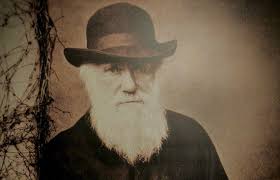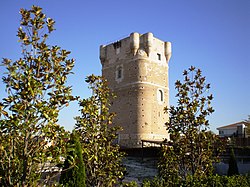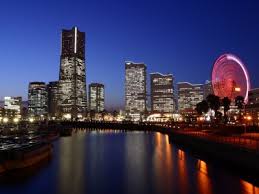Timeline:
http://www.dipity.com/rafulin/Beyonce_1/
Charles Darwin:
Charles Robert Darwin (12 February 1809 – 19 April 1882) was an English naturalist.
He proposed the scientific theory that this branching pattern of evolution resulted from a process that he called natural selection. He published his theory with compelling evidence for evolution in his 1859 book 'On the Origin of Species'. The scientific community and much of the general public came to accept evolution as a fact in his lifetime.
 ________________________________________________
Essay about the big deal:
About the BIG DEAL, I think we have to be more respectable to the Earth because if we don't respect our planet, climates will change and a lot of more things; and that would be bad for us in all directions.
CLIMATES:
Hot Climates Zones:
- Equatorial climate:
The sun shines over all the year and the temperature is high through the year. The rainfall is heavy and falls uniformly in each month of the year.
We can find this climate in... Central America,The Amazon,the Congo basin,the Gulf of Guinea and the southern-east of Asia...
________________________________________________
Essay about the big deal:
About the BIG DEAL, I think we have to be more respectable to the Earth because if we don't respect our planet, climates will change and a lot of more things; and that would be bad for us in all directions.
CLIMATES:
Hot Climates Zones:
- Equatorial climate:
The sun shines over all the year and the temperature is high through the year. The rainfall is heavy and falls uniformly in each month of the year.
We can find this climate in... Central America,The Amazon,the Congo basin,the Gulf of Guinea and the southern-east of Asia...
 - Tropical climate:
Rainfalls are heavy in all months. There are seasonal differences in monthly rainfall but , the temperatures that are about 27ºC mostly stay the same. We can find it in...Central and South America, Central and Southern Africa,south and southeast Asia and north and east of Australia....
- Tropical climate:
Rainfalls are heavy in all months. There are seasonal differences in monthly rainfall but , the temperatures that are about 27ºC mostly stay the same. We can find it in...Central and South America, Central and Southern Africa,south and southeast Asia and north and east of Australia....

- Desert Climate:
Winds are lights, and a very dry heat, the deserts covert the 12% of Earth´s land surfaces.We can find this climate in low-latitud deserts and at southwestern United States and northern Mexico; Argentina;north Africa;south Africa and at the central part of Australia.
Temperate Climate Zone:
- Oceanic climate zone:
Normally it's find along the west coasts at the middle latitud of some of the world´s continent this climate has cool summer and warm winters. We can find it at much parts of Europe,at coastal northwestern North America, at portions of southern South America and southern Africa and at southeast Australia and New Zeland.
- Mediterranean Climate:
A Mediterranean climate is the climate typical of most of the lands in the Mediterranean Basin as part of Subtropical Climate. We can find it in much of California, in parts of Western and South Australia , in southwestern South Africa, in isolated sections of Central Asia and in parts of central Chile.
- Continental Climate:
Often winter temperature is cold. And relatively moderate precipitation occurring mostly in summer. Only a few areas in Iran, adjacent Turkey,Afghanistan,Pakistan, and Central Asia show a winter maximum in precipitation, and this typically melts in early spring.
Cold Climates:
- Polar climates:
Regions with a polar climate are characterized by a lack of warm summers (specifically, no month having an average temperature of 10 °C or higher). The sun shines 24 hours in the summer, and barely ever shines at all in the winter. Polar climate results in treeless tundra,glaciers, or a permanent or semi-permanent layer of ice. On Earth, the only continent where the extreme polar climate is predominant is Antartica.
- High Mountain:
Temperatures are very low. Precipitation is heavy.The precipitations are find in form of snow.
_________________________________________________________________________
Arroyomolinos:
1)
Arroyomolinos is at the west of europe.
Arroyomolinos is at the centre of Spain.
Arroyomolinos is at the South West of Madrid.
2) Madrid's frontiers: Avila, Toledo, Guadalajara, Cuenca and Segovia.
Avila: It´s at the west of Madrid.
Toledo: It´s down Madrid(south)
Guadalajara: It´s next to Madrid; at the east.
Cuenca: It´s in the south-east next to Madrid.
Segovia: It's up of Madrid.
3)Arroyomolinos' coordinates:  40°16′9″N 3°55′12″O.
40°16′9″N 3°55′12″O.
4)Villages near Arroyomolinos:
Sevilla La Nueva
Moraleja de Enmedio
El Alamo
Humanes de Madrid
5) El alamo: Arroyomolinos is up it.
Humanes de Madrid: Arroyomolinos is up it.
Moraleja de Enmedio: it's at the south-east of Arroyomolinos.
Sevilla la Nueva: it is at the north-west of Arroyomolinos.
6)The municipality is located within the Community of Madrid, in the south west. It is in a depression due to its proximity to the river Guadarrama. The undeveloped land is used mostly as farmland and as the relief, is composed of hills in its entirety, except near the streams.
((El municipio está situado dentro de la Comunidad de Madrid, en la zona sur oeste. Se encuentra en una depresión debido a su cercanía al río Guadarrama. El terreno no urbanizado se utiliza en su mayoría como tierras de cultivo y en cuanto al relieve, está compuesto por colinas en su totalidad, excepto en las proximidades a los arroyos.))
7) Arroyomolinos has Mediterranean climate, this means that summers are hot and winters are cold:
8) The landscape of Arroyomolinos have a river and also a forest.
9) Poblation: 16207 habitants (2010)
Transport: in Arroyomolinos we can get the bus to go to many places.
10)History of Arroyomolinos:
According to some sources, Arroyomolinos was founded during the Muslim invasion, later to be reconquered by King Alfonso VI of Castile in his advance toward the decisive conquest of Toledo (1085). By then, the place was known by the name of the Arroyo Huts. Other sources believe however that the town was founded in 1400, with the same name, later changed to the present. It was during those years when Peter the Cruel Day granted the privilege Gómez de Toledo repopulate the end of Arroyomolinos with 80 inhabitants. By 1476, Juan de Oviedo took over the village and ordered the construction of a tower, now known as Tower or Tower Arroyomolinos Pan When in that year, Don Gonzalo Chacón besieged Oviedo Arroyomolinos to fight, not the Tower been finalized yet, so it was the latter who ordered his termination.
 In the late nineteenth and early twentieth centuries, the Tower was used as a barn in his first two floors and a loft in the other three. From this period dates the retapiado of the holes on the upper floors to control birds and was also then that swept the parapet and battlements on the roof, in order to build more than 4,000 nests that once had the tower. Despite its proximity to the highway Extremadura was not significantly affected by population growth in the 1970's that affected other cities around it. But in the early twenty-first century the high price of housing in Madrid, coupled with its low pre-urban development has opened the door to speculation and has driven the population growth, doubling its population in just one year, of 3984 inhabitants in 2005 to 9020 to 2006.
In the late nineteenth and early twentieth centuries, the Tower was used as a barn in his first two floors and a loft in the other three. From this period dates the retapiado of the holes on the upper floors to control birds and was also then that swept the parapet and battlements on the roof, in order to build more than 4,000 nests that once had the tower. Despite its proximity to the highway Extremadura was not significantly affected by population growth in the 1970's that affected other cities around it. But in the early twenty-first century the high price of housing in Madrid, coupled with its low pre-urban development has opened the door to speculation and has driven the population growth, doubling its population in just one year, of 3984 inhabitants in 2005 to 9020 to 2006.
| ______________________________________________________ | |
((Según algunas fuentes, Arroyomolinos fue fundado durante la invasión musulmana, para más tarde ser reconquistado por el monarca Alfonso VI de Castilla en su avance hacia la decisiva reconquista de Toledo (1085). Por entonces, el lugar era conocido con el nombre de Chozas del Arroyo.
Otras fuentes sin embargo consideran que la localidad fue fundada en el año 1400, con la misma denominación, para más tarde cambiar a la actual. Fue durante aquellos mismos años cuando Pedro I el Cruel concedió a Día Gómez de Toledo el privilegio de repoblar el término de Arroyomolinos con 80 habitantes.
Hacia 1476, Juan de Oviedo se adueñó de la villa y ordenó la construcción de una torre, conocida en la actualidad como Torreón de Arroyomolinos o Torre del Pan. Cuando en ese año, Don Gonzalo Chacón sitió Arroyomolinos para combatir a Oviedo, el Torreón no se había concluido aún, así que fue este último quien ordenó su finalización.
A finales del siglo XIX y principios del XX, el Torreón fue utilizado como granero en sus dos primeras plantas y como palomar en las tres restantes. De esta época data el retapiado de los huecos de las plantas superiores para controlar las aves y fue también entonces cuando se arrasaron el parapeto y almenaje del terrado, con el fin de construir los más de 4.000 nidos que otrora tuviera la torre.
Pese a su cercanía a la autovía de Extremadura no se vio muy afectado por el crecimiento poblacional de los años 1970 que afectaron a otras localidades de su entorno. Sin embargo a comienzos del siglo XXI el alto precio de la vivienda en Madrid, unido a su escaso desarrollo urbanístico previo, ha abierto las puertas a la especulación inmobiliaria y ha impulsado el desarrollo demográfico, duplicando su población en apenas un año, de 3984 habitantes en 2005 a 9020 en 2006.))
11)Some images of Arroyomolinos:
12) Our visit: We went to a park of Arroyomolinos, we saw mountains and also we learned many things.
THIS IS ARROYOMOLINOS!!!
Some Photos (Water Cycle)
Glacier: large amount of ice that moves slowly down a mountain.
Waterfall: water that is flowing over the edge of high rocks into a river of the sea.
Lake: large area of water that is surrounded by land
Tributary: a rive that flows int a larger river
River: a long area of water that flows into the sea
Meander
Delta: flat alluvial area at the mouth of some rivers where the mainstream splits up into several distributaries.
Estuary :the widening channel of a river where it nears the sea, with a mixing of fresh water and salt water.
Lagoon:any small body of water
*My imaginary trip around the world*
First, I did my bag; and then I went to the airport, and I take an air plane to Norway. I don´t spend a lot of time in the air plane, but I get a little tired. Then I went to my hotel it was confortable and pretty. Next day I went to the streets of Oslo and when the night come, the city was beautiful.:
After 5 days in Oslo, I take another air plane to Turkey.
The 3º day in Ankara, (capital of Turkey) I visit the city in helicopter I saw meny trees, and a lot of houses.:
My next country to visit was Rusia, this time I went to Sochi (a city of Rusia) by boat. When I arrived, I only wanted to sleep, because I was tired, but when I saw Sochi, I lose it.
This are some photos of Sochi:
Because, it was summer, I bought a swimsuit and I went to the beach. I had a lot of fun!
After 5 days I had to go, and now I travelled to India.
I went to Bollywood and I went to a lot of theatres and I had a lot of fun, in all videos or theatres were music and people danced with their clothes from India. Then I put an Indian cloth and I was very funny!.
theatres
After all, my new country was Tokio (Japan) I went to visit the streets and the night was beautiful:
 .
.Then, I went to Alaska(Canada) by boat, I was freezing because it was winter I play with the snow with my friend and also I ski. I pass a good and funny time!
After another 5 days I toke a plane to the capital of Mexico. I went to restaurants and to see the streets and also I saw many fashion shows:
Finally, I went to Brazil and I visit the city in helicopter another time it was beautiful because there were a lot of flowers because in Brazil was spring:
After all I went to Spain, and I thank I had a lot of fun in all countries! I think I am going to make another travelling around the world!!! *The end.

























